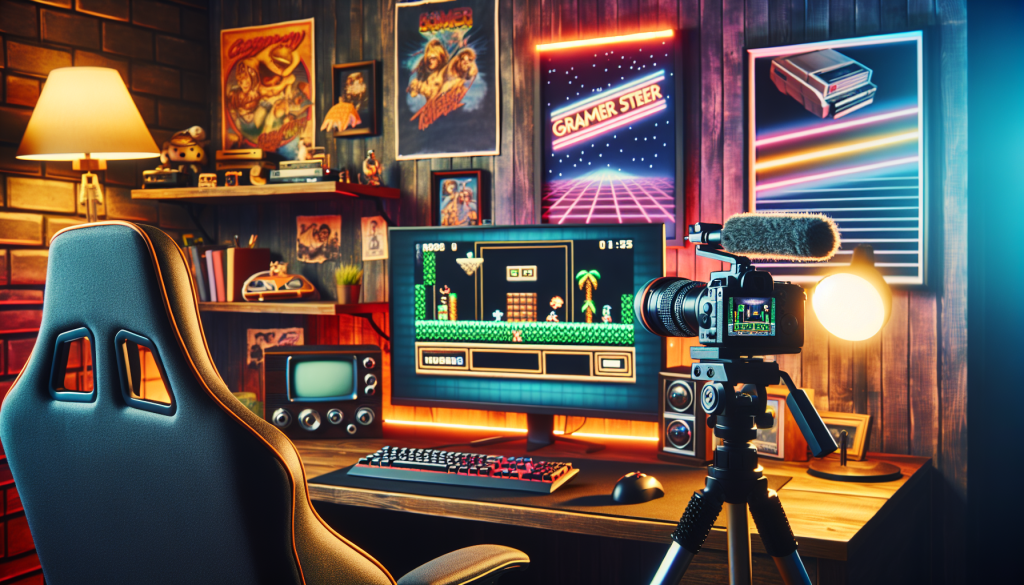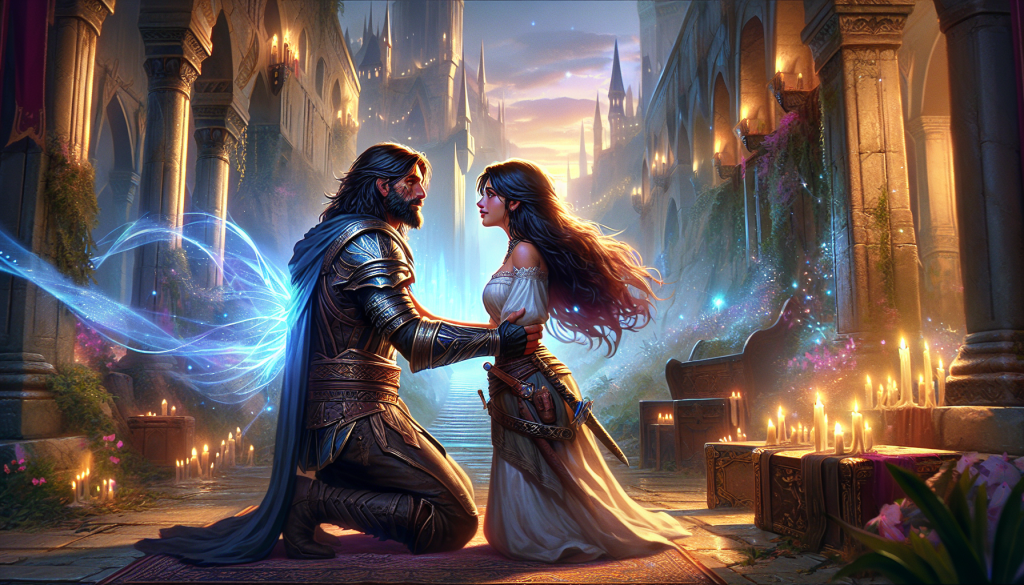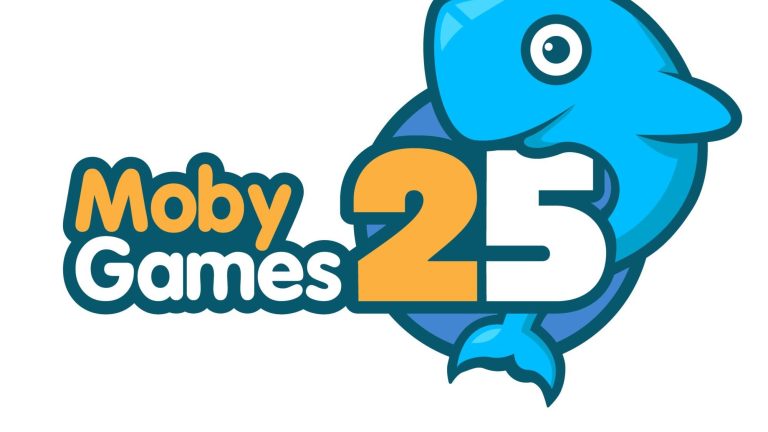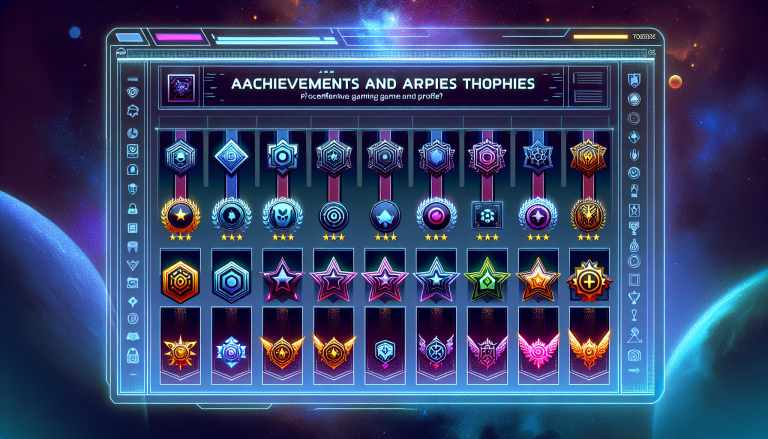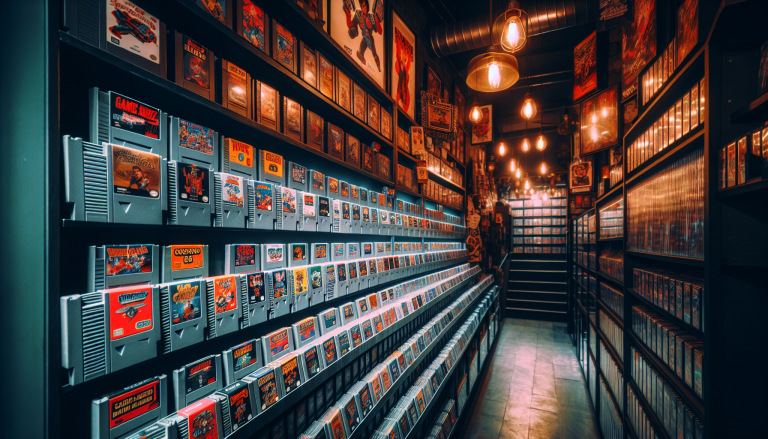The Role of Music in Retro Gaming Nostalgia
Close your eyes for a moment and imagine yourself transported back in time to the 1980s or 1990s. Picture yourself sitting in front of a bulky television, gripping a chunky controller in your hands, and diving into the pixelated worlds of classic video games. As you navigate through the colorful landscapes and face off against pixelated enemies, what is the one thing that instantly transports you back to that golden era of gaming? It’s the music.
The role of music in retro gaming nostalgia cannot be overstated. It is the soundtrack of our cherished memories, the melodic thread that ties together our experiences of endless hours spent in front of the screen. From the catchy tunes of Super Mario Bros. to the haunting melodies of The Legend of Zelda, these iconic soundtracks have become ingrained in our collective consciousness.
Iconic soundtracks like these have stood the test of time, transcending the limitations of the hardware they were originally composed on. They have become synonymous with the games themselves, instantly recognizable and capable of evoking a flood of emotions and memories. Hearing the opening notes of a familiar theme can transport us back to a simpler time, reminding us of the joy, frustration, and sense of wonder we experienced while playing these games.
But what is it about retro game music that makes it so memorable? It’s not just the catchy melodies and innovative compositions, although those certainly play a role. It’s also the way in which the music enhances the immersive experience of playing these classic games.
In the early days of gaming, graphics were limited and storytelling was often minimal. However, the music had the power to fill in the gaps, to create a sense of atmosphere and emotion that elevated the gameplay to a whole new level. Whether it was the tense, pulsating beats as you raced against the clock in Sonic the Hedgehog or the melancholic melodies that accompanied the quiet moments of solitude in Final Fantasy, the music was an integral part of the gaming experience.
Furthermore, the limitations of the hardware actually worked in favor of the music. Composers had to work with limited channels and sounds, forcing them to be creative and innovative in their compositions. This led to the creation of iconic melodies that could be hummed or whistled long after the console was turned off.
The enduring influence of retro game soundtracks can be seen in the thriving community of video game music remixes and covers. Countless artists have taken these beloved melodies and given them new life, putting their own spin on the classics. This not only speaks to the lasting impact of these soundtracks, but also to the power of music to connect people and inspire creativity.
So the next time you find yourself reminiscing about the good old days of gaming, take a moment to appreciate the role that music played in creating those cherished memories. Whether it’s the upbeat tunes of a platformer or the epic orchestral scores of an RPG, the music of retro games has left an indelible mark on our hearts and continues to bring joy and nostalgia to this day.
Iconic Soundtracks of the Retro Gaming Era
Ah, the sweet melodies of the retro gaming era! Those catchy tunes that instantly transport you back to your childhood, sitting cross-legged on the floor in front of your old console, controller in hand. The iconic soundtracks of classic video games hold a special place in the hearts of gamers around the world, and for good reason. In the 8-bit and 16-bit eras, where graphics were limited and storytelling was minimal, music played a vital role in creating an immersive gaming experience. With the limited technology available at the time, composers had to work wonders with a few simple sound chips to create memorable melodies that would stick with players long after they had turned off their consoles. One of the most recognizable soundtracks of the retro gaming era is undoubtedly the music from Super Mario Bros. Composed by the legendary Koji Kondo, the upbeat and catchy tunes of the Mushroom Kingdom have become synonymous with the franchise itself. Who can forget the joyous melody that played as Mario embarked on his platforming adventures, or the adrenaline-pumping tune that accompanied him as he raced against the clock? The music of Super Mario Bros. not only enhanced the gameplay, but it also became a defining characteristic of the series. Another game with a truly unforgettable soundtrack is The Legend of Zelda: Ocarina of Time. The haunting melodies composed by Koji Kondo perfectly captured the atmosphere and emotion of Link’s epic quest. From the serene and peaceful tunes that played in the Kokiri Forest to the intense and dramatic music that accompanied boss battles, the music of Ocarina of Time elevated the game to new heights. It’s no wonder that even today, gamers still find themselves humming the iconic “Song of Storms” or “Zelda’s Lullaby.” But it’s not just the big-name franchises that had incredible soundtracks. Many lesser-known games from the retro era had hidden musical gems that deserve recognition. Take, for example, the music from the original Mega Man games. Composed by Manami Matsumae, the energetic chiptunes perfectly captured the fast-paced action and futuristic atmosphere of the series. Each level had its own unique theme that not only set the mood but also helped players distinguish one stage from another. So, why does music hold such a special place in our hearts when it comes to retro gaming? Well, aside from the sheer nostalgia factor, music has a unique ability to enhance immersion. In the absence of detailed graphics and complex storytelling, the right soundtrack can transport players to another world, evoking a range of emotions and heightening the overall gaming experience. Imagine exploring the dark, atmospheric corridors of a haunted mansion in Castlevania, with the haunting melodies of “Vampire Killer” or “Bloody Tears” echoing in the background. Or picture yourself speeding through futuristic landscapes in Sonic the Hedgehog, accompanied by the fast-paced and energetic tunes of “Green Hill Zone” or “Chemical Plant Zone.” The music not only adds excitement and tension to the gameplay but also helps to create a sense of place and atmosphere. The enduring influence of retro game soundtracks cannot be overstated. Even today, many modern games pay homage to the chiptune style and draw inspiration from the classics. In fact, there is a growing community of musicians and artists who specialize in creating new music using the same limitations and techniques of the retro era. This further proves the lasting impact that these iconic soundtracks have had on the gaming industry as a whole. So, the next time you fire up an old console or dive into a classic retro game, take a moment to appreciate the incredible music that accompanies your gaming adventures. Whether it’s the cheerful melodies of Super Mario Bros., the epic compositions of The Legend of Zelda, or the energetic chiptunes of Mega Man, these soundtracks are a testament to the power of music in gaming and an integral part of the nostalgia that keeps us coming back for more.How Music Enhances Immersion in Classic Video Games
When it comes to classic video games, there is no denying the power of music to enhance the overall experience and immerse players in a vibrant and captivating world. The role of music in retro gaming goes far beyond being a mere background element – it becomes an integral part of the gameplay, evoking emotions, setting the tone, and creating lasting memories.
One of the key ways in which music enhances immersion in classic video games is through its ability to establish an emotional connection with players. Take, for example, the iconic Super Mario Bros. theme. As soon as those catchy, upbeat notes start playing, you can’t help but feel a surge of excitement and anticipation. The music becomes synonymous with the game itself, instantly transporting you to the Mushroom Kingdom and filling you with a sense of adventure.
Furthermore, the carefully crafted soundscapes of classic video games can create a sense of atmosphere that draws players deeper into the game world. From the haunting melodies of The Legend of Zelda to the futuristic beats of Sonic the Hedgehog, the music sets the stage and complements the visuals to create a fully immersive experience. It’s almost as if the music becomes another character in the game, guiding and engaging players on their virtual journey.
But it’s not just about creating a mood – music in classic video games also serves practical purposes. From the tense, fast-paced beats that accompany a boss battle to the calming tunes that play during moments of respite, the music helps to convey information and guide players through the gameplay. It adds a layer of depth and complexity to the overall gaming experience, making it more engaging and rewarding.
Additionally, the enduring influence of retro game soundtracks cannot be overstated. These iconic melodies have become part of our cultural fabric, recognized and beloved by gamers of all ages. They have inspired countless remixes, covers, and even orchestral performances, breathing new life into the nostalgia-inducing tunes of yesteryear.
To fully appreciate the impact of music in classic video games, it’s important to pay attention to the intricate details and thought put into the compositions. Each melody, rhythm, and instrument choice is carefully crafted to complement the gameplay, heighten the emotions, and leave a lasting impression. It’s not just background noise – it’s a vital piece of the gaming puzzle.
So, the next time you fire up your favorite retro game, take a moment to truly listen to the music. Let yourself get lost in the melodies, feel the emotions they evoke, and appreciate the skill and artistry behind them. You might be surprised at just how much music can enhance your immersion in the world of classic video games.

